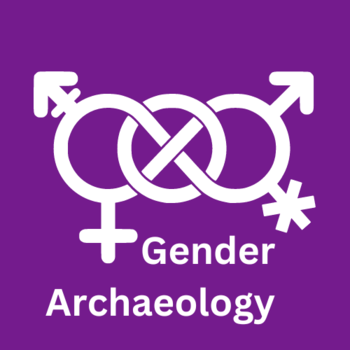Gender Archaeology
Gender archaeology was born out of Feminism about 40 years ago, but it is not to be confused with feminist archaeology. While the latter remains strongly connected to the political movement and its intentions, gender archaeology has established itself firmly as a scientific subdiscipline and is characterized by constant development (see literature down below). Nonetheless, the potential of gender studies in archaeology is, albeit growing, still undervalued. Thus, researchers of the Institute of Near Eastern Archaeology at the Freie Universität Berlin do not only publish but also teach courses on gender archaeology.
Why is Gender Archaeology Important?
Gender archaeology enables to:
- make (marginalized) genders visible
- study the many facets of gender (including but not limited to women studies) with a theoretical and methodological framework
- enhance awareness of biases towards gender (and its norms, ideologies, identities etc.) influencing the work of other researchers as well as our own
- understand gender as part of a nexus of various identity aspects
- use gender (as well as other identity aspects) as a deconstructing tool to study societies
What is Gender?
Gender is a complex “system of social rather than biological classification that varies cross-culturally and changes over time in response to a constellation of conditions and factors”[1]. It is an identity trait, which defines itself in relation to others through paradigmatic relationships, not only in commonalities but also in difference[2]. Initially, gender has been understood as polar to the term sex, given that sex is biological and therefore natural and not socially constructed as is gender. However, Butler proposed that “the demarcation of anatomical difference does not precede the cultural interpretation of that difference, but is itself an interpretive act laden with normative assumptions”[3]. Still, sex is often used especially in anthropology and bioarcheology to denote the bodily features of human remains such as a wide pelvis etc. – otherwise a differentiation between sex and gender would boil down to semantics[4]. Furthermore, there are real effects of sex on gender, which may not be neglected[5].
But gender is not just a classification; in research, it is more of a deconstructing tool to examine the roles, definitions and performances of people in social structures[6]. That’s why gender has also been described as a social construct, (historical/social) process, analytical concept, structuring principle/category etc.[7] To use this tool judiciously, one should differ between gender role: differential activities in social, economic, political, and religious institutions; gender identity: the feeling of an individual (or a group) on their own gender; and gender ideology: the meaning of genders in social and cultural contexts (gender as a symbol). These categories vary independently, temporally and cross-culturally[8].
Courses
In recent years, the following courses have been offered by the institute on gender archaeology:
WiSe 23/24: Ideologie, Identität und Gender in neuassyrischer Zeit (Valery Schlegel)
WiSe 23/24: Frauen an der Macht! Antike Frauen in militärisch-politischen Führungspositionen (Marina Weiss), which produced the exhibition "Four Women - Four Stories".
SoSe 23: Gender Archaeology: Frauen und das dritte Geschlecht im Antiken Westasien (Valery Schlegel)
Next courses on gender will presumptively be offered in 2025.
Literature
Download a list of suggested literature here or down below.
[1] Conkey/Spector 1984, 16.
[2] Brumfiel 2006, 34. Also Sørensen 2000, 52f.
[3] Butler 1986, 46 cited after Garcia-Ventura/Zisa 2017, 44. Literature on non-binary gender see Moen 2019a, 217. More on Sex/Gender, Gender Performance and J. Butler see Voss 2006, 368-371. Detailed discussion on the history of the terms sex and gender see Asher-Greve 2018, 18-27.
[4] Moen 2019b, 19. Also Sofaer 2006, 66f. 96f. 100f.; Sørensen 2000, 46-52.
[5] See Sofaer 2012, 231; Wesp 2017, 112.
[6] Zsolnay 2018, 464.
[7] Conkey/Gero 1991, 8f; Gilchrist 1999, 9; Nelson 1997, 15-27; Sørensen 2000, 42-59. On the origin of the word gender see Zsolnay 2018, 461f.
[8] Conkey/Spector 1984, 15f.; Sofaer 2006, 97f.






